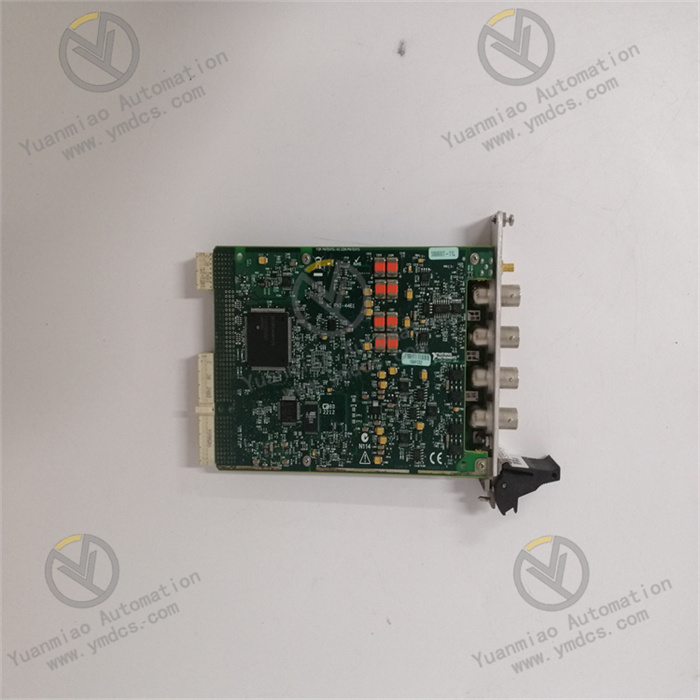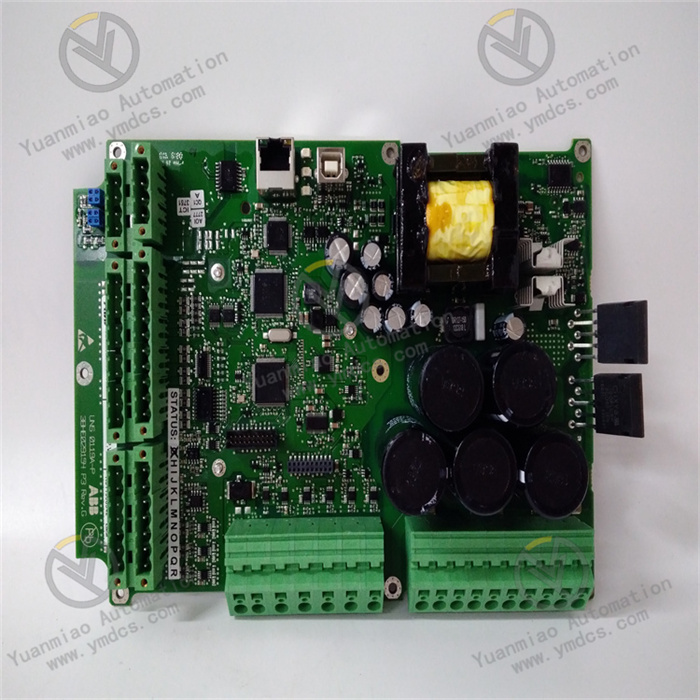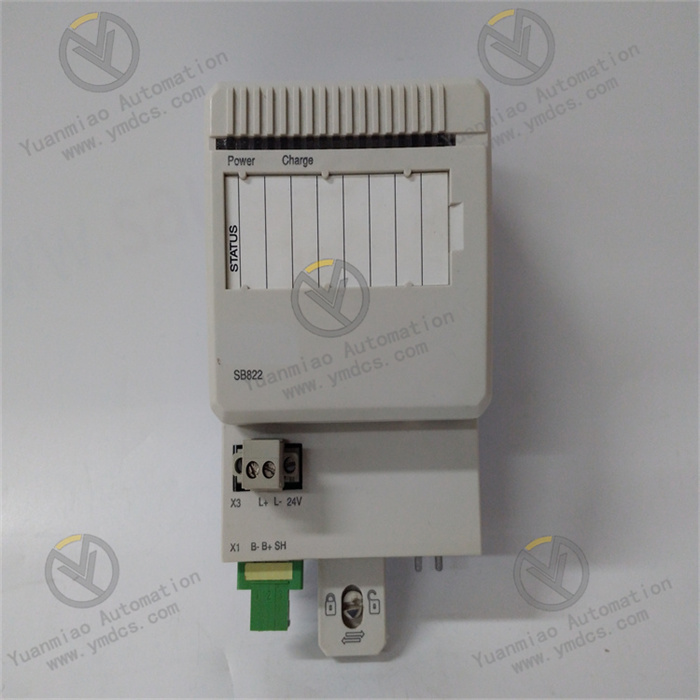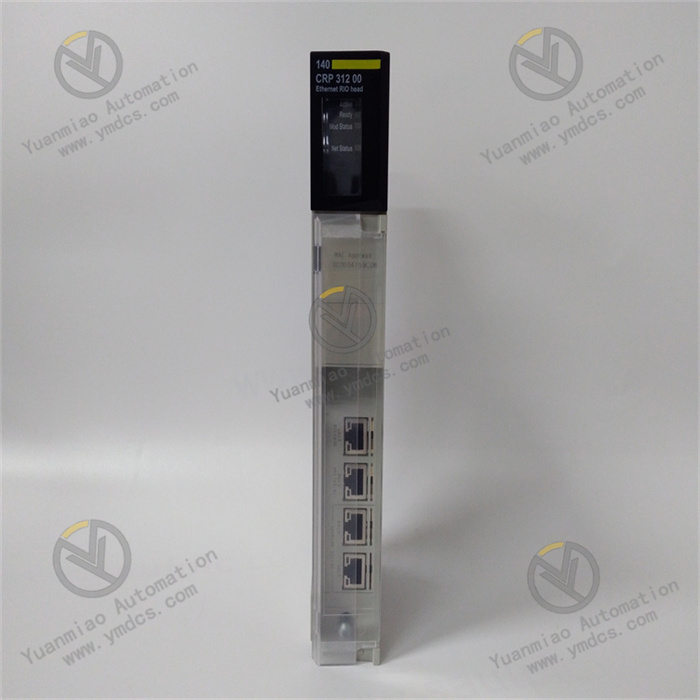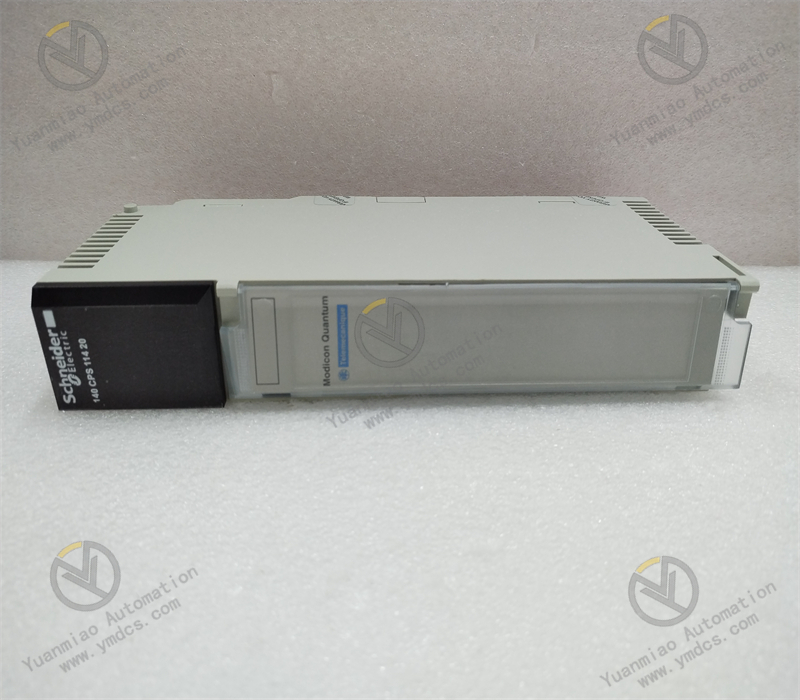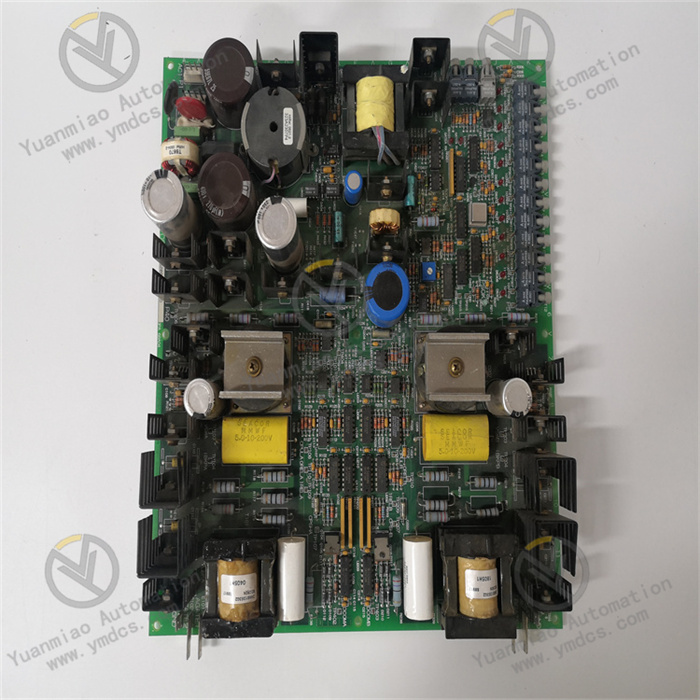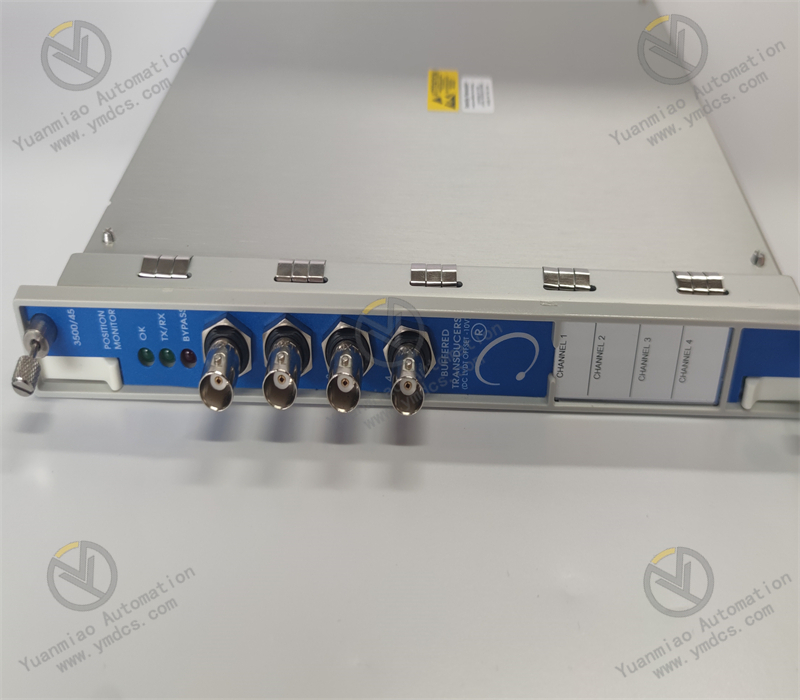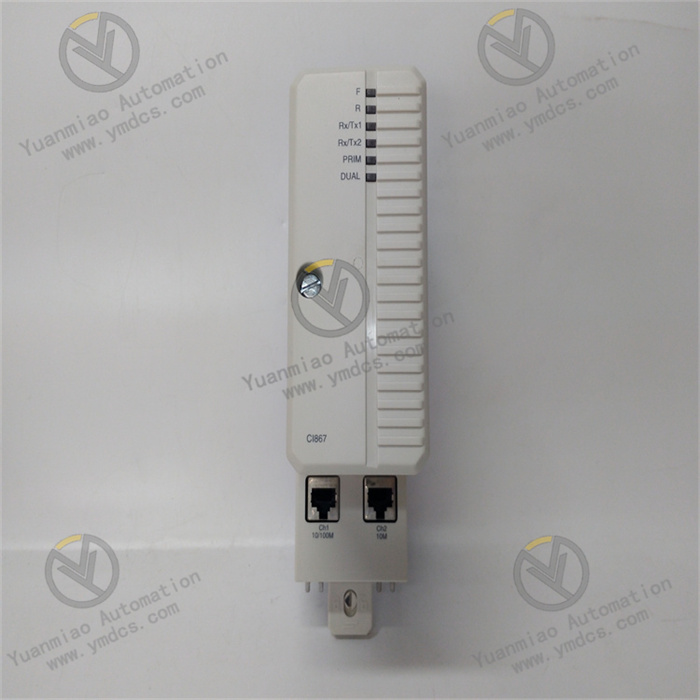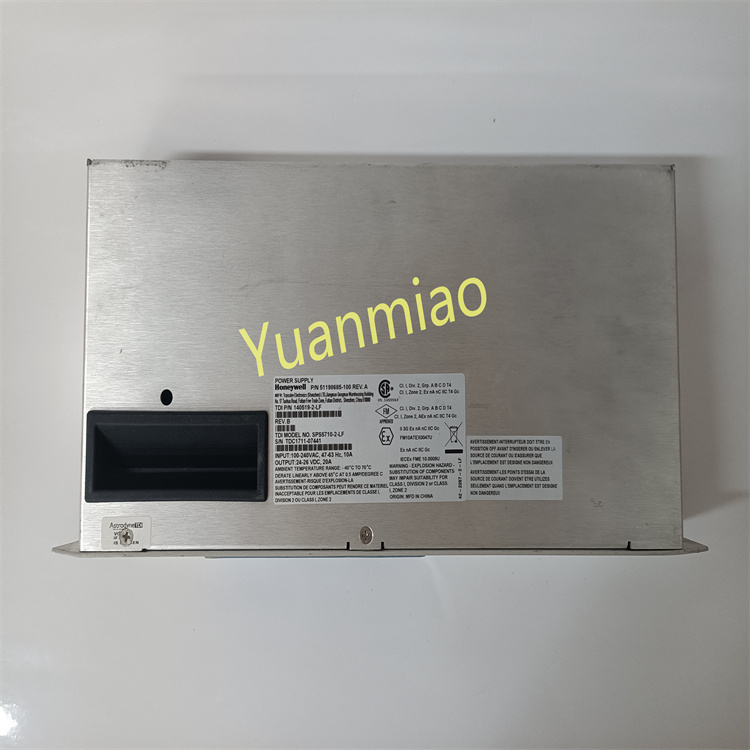Description
ABB PM665 3BDS005799R1
I. Functional Features
- High-Performance Processing Capability
- Multi-Core Processor Architecture: Equipped with a high-performance processor (specific model undisclosed), supporting real-time multitasking to execute complex control logic, algorithms, and data operations, meeting the requirements of high-real-time industrial scenarios.
- Real-Time Operating System (RTOS): Ensures the determinism and precision of control tasks, supporting rapid response to field signals (such as sensor inputs and actuator feedback).
- Floating-Point Unit (FPU): Improves mathematical calculation accuracy, suitable for scenarios requiring high-precision control (e.g., process optimization, advanced closed-loop control).
- Rich Communication Interfaces and Protocols
- Integrated Ethernet interface supporting mainstream industrial Ethernet protocols such as PROFINET, Modbus TCP, and OPC UA, enabling high-speed data interaction with host computers, HMIs, and SCADA systems.
- Supports fieldbuses such as PROFIBUS DP and CANopen, compatible with traditional industrial devices and distributed I/O modules.
- Features serial interfaces (e.g., RS232/RS485) for adapting to legacy devices or specific communication needs.
- Industrial Communication Support:
- Distributed System Expansion: Connects to distributed I/O modules (e.g., PM500, PM800 series) via ABB's System 800xA architecture or fieldbuses, supporting large-scale system expansion.
- Modularity and Flexibility
- AC 800M System Compatibility: As the core controller of the AC 800M series, it seamlessly integrates with I/O modules, safety modules, communication modules, etc., in the series to build customized control systems.
- Programming Compatibility: Supports IEC 61131-3 standard programming languages (such as Ladder Diagram LD, Structured Text ST, Function Block Diagram FBD, etc.), using ABB's Control Builder M or AC 800M Library development tools, with support for code reuse and modular design.
- Industrial-Grade Reliability and Safety
- Wide operating temperature range (typically -20°C to +60°C), adapting to harsh industrial environments (e.g., high-temperature workshops, humid environments).
- Vibration and shock resistance (compliant with IEC 60068-2 standards), meeting mechanical stress requirements in industrial fields.
- Power redundancy and reverse-connection protection, supporting dual-power input to ensure stable system operation during power fluctuations.
- High-Stability Design:
- Safety Functions: Supports safety-related applications (requires matching safety modules), complies with functional safety standards (e.g., IEC 61508, ISO 13849), and can be used in SIL 2/3 safety systems.
- Data Management and Diagnostics
- Data Storage and Logging: Built-in non-volatile memory (e.g., flash) supports power-off preservation of programs and data; can record system logs, fault alarms, and operational data for traceability and maintenance.
- Online Diagnostics and Remote Debugging: Achieves online monitoring (real-time variable viewing, parameter modification) via Control Builder M, supporting remote debugging and firmware upgrades to reduce on-site maintenance costs.
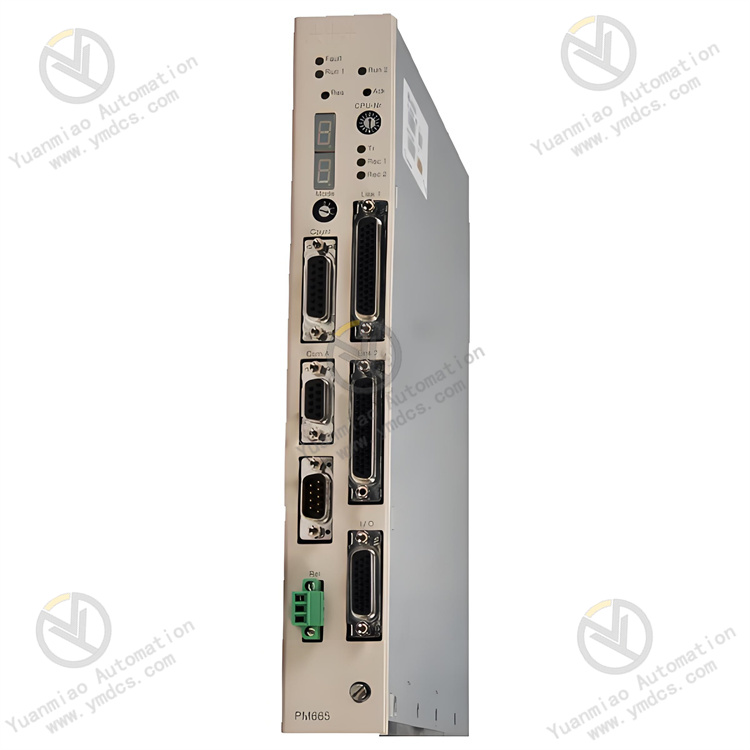
II. Technical Parameters
| Parameter | Description |
|---|---|
| Processor | High-performance processor (e.g., ARM architecture or dedicated industrial CPU), typically with a main frequency of over 1 GHz |
| Memory | - System memory: 512 MB DDR3 SDRAM - Flash: 256 MB (expandable) |
| Communication Interfaces | - Ethernet: 1× 10/100/1000 Mbit/s (RJ45, supporting PROFINET/Modbus TCP) - Serial: 1× RS232/RS485 - Fieldbus: PROFIBUS DP master/slave (optional) |
| Input Voltage | 24 VDC (±15%), supporting redundant power input |
| Power Consumption | Typical value ≤10 W (without expansion modules) |
| Operating Temperature | -20°C to +60°C (horizontal installation), -20°C to +50°C (vertical installation) |
| Storage Temperature | -40°C to +85°C |
| Protection Class | IP20 (in rail-mounted state) |
| Dimensions | Approximately 150 mm (W) × 100 mm (H) × 150 mm (D) |
| Weight | Approximately 0.5 kg |
| Real-Time Clock | Battery-powered, accuracy ±50 ppm (25°C) |
| I/O Expansion Capacity | Supports up to thousands of I/O points via fieldbus (depending on system configuration) |
| Safety Certifications | IEC 61508, ISO 13849 (requires matching safety modules) |
III. Application Scenarios
- Process Industry Automation
- Chemical, Oil & Gas: Used for reactor control, distillation column regulation, compressor monitoring, etc., to achieve precise control and safety interlocking in continuous production processes.
- Pharmaceuticals & Food Beverage: Implements formula management, aseptic filling control, and quality traceability systems in production lines to meet compliance requirements such as GMP.
- Power and Energy Management
- Power Plant Automation: As the core controller of distributed control systems (DCS), used for steam turbine control, boiler monitoring, power grid relay protection, etc.
- Renewable Energy: Implements energy conversion control, fault diagnosis, and remote monitoring in photovoltaic inverters and wind turbines.
- Metallurgy and Heavy Industry
- Steel Production Lines: Controls rolling mill speed synchronization, heat treatment process optimization, and precise furnace temperature regulation to improve production efficiency and product quality.
- Mining and Mineral Processing: Used for belt conveyor control, mineral processing automation, and equipment condition monitoring (e.g., vibration analysis).
- Smart Factories and Building Automation
- Discrete Manufacturing: Serves as an edge controller in automotive manufacturing and electronic assembly lines, accessing industrial internet (IIoT) to enable device networking, OEE analysis, and predictive maintenance.
- Building Automation: Manages central air conditioning systems, energy metering, and fire alarm systems, supporting building protocols such as BACnet.
- Machine and Equipment Control
- Packaging Machinery: Multi-axis synchronization control (e.g., electronic cams), servo motor drives to achieve precise positioning and tension control in high-speed packaging production lines.
- Robot Integration: Communicates with industrial robots via protocols such as PROFINET to collaboratively complete complex tasks like welding and palletizing.

General Installation and Configuration Steps for ABB PM665 3BDS005799R1
Installation Steps
- Preparation: Ensure the installation environment meets requirements, such as suitable temperature, humidity, and no strong electromagnetic interference. Prepare necessary tools, such as screwdrivers.
- Location Selection: Choose a suitable location to install the PM665 module based on the layout of the control cabinet or equipment. It is typically required to be installed in a well-ventilated area for heat dissipation and easy operation/maintenance. The module dimensions are 40mm (W) × 273mm (H) × 252mm (D), weighing 2.04kg, requiring sufficient space reservation.
- Mounting and Fixing: Secure the PM665 module in the selected position with screws or other fixing devices according to the module's mounting holes, ensuring stable installation that can withstand certain vibrations and impacts.
- Power Connection: Connect a compliant power supply to the PM665 module's power input. The PM665 typically operates at 220V. Ensure correct connection of power positive/negative poles and that the power supply has sufficient capacity to stably power the module.
- Communication Cable Connection: Connect the PM665 module with other devices (such as host computers, sensors, actuators, etc.) via corresponding communication interfaces and cables according to actual application requirements. The PM665, based on the PowerPC architecture, has multiple communication interfaces such as high-speed links to enable communication with other devices.
- Connection of Other Related Devices: If the system requires connecting other modules or devices, such as expansion modules or I/O modules, connect them according to relevant specifications and requirements to ensure communication and collaborative operation between modules.
Configuration Steps
- Hardware Configuration: Use relevant configuration tools or software to set the PM665 module's hardware parameters, such as determining communication interface parameters (baud rate, data bits, stop bits, parity bit, etc.) and setting the module address to ensure correct communication with other devices.
- System Software Installation: Install the operating system or real-time operating system suitable for the PM665 module, along with relevant drivers and support software, to provide a software foundation for the module's normal operation.
- Application Program Download and Configuration: Write or download corresponding application programs to the PM665 module based on specific control tasks and functional requirements. Application programs may include control logic, algorithms, data processing programs, etc. Then configure the application programs, such as setting parameters and initializing variables, to enable them to run as expected.
- Network Configuration: If the PM665 module needs to access a network (such as industrial Ethernet), perform network configuration, including setting IP address, subnet mask, gateway, DNS server, and other parameters to achieve communication and data exchange with other network devices.
- Monitoring and Debugging: After completing installation and preliminary configuration, monitor the PM665 module's operating status through monitoring software or tools, checking whether parameters are normal, communication is stable, and application programs execute as expected. If issues arise, perform corresponding debugging and troubleshooting until the system operates normally.


